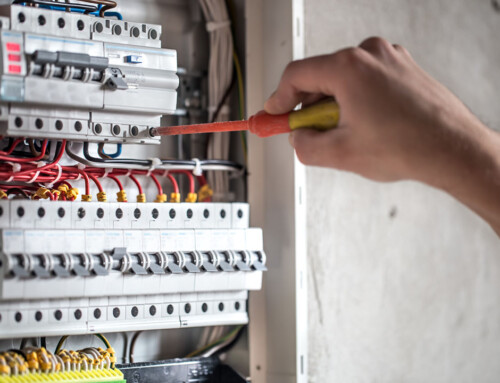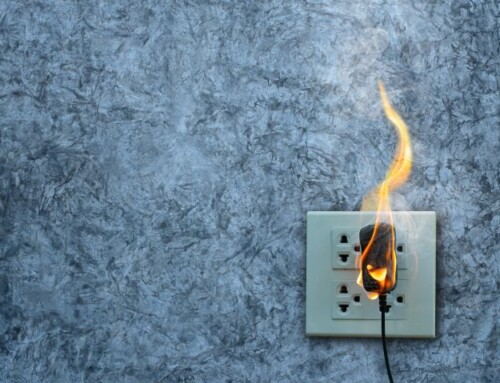Table of Contents
Did you know that electrical short circuits are a common cause of house fires, accounting for a significant number of electrical-related incidents each year?
Short circuits occur when electricity strays from its intended path between wires, resulting in a sudden surge in current. This can cause overheating, sparks, and potentially ignite nearby materials, posing serious fire and shock risks.
In this article, we’ll explore what exactly constitutes a short circuit, its typical causes and warning signs, and essential prevention measures to protect against this potentially dangerous electrical issue. Understanding short circuits is crucial for maintaining a safe home environment.
What is Short Circuit?
Our homes are wired with safety in mind to prevent electrical leaks and shocks. But even the best systems aren’t perfect.
Sometimes, electricity can take an unintended shortcut, called a short circuit. This happens when wires touch or become damaged, creating a low-resistance path for the current. The surge of electricity can overheat wires, damage equipment, and even start fires.
Types of Short Circuit
Electrical systems can experience two main types of short circuits:
-
Simple Short Circuit
This occurs when a hot wire carrying current makes unintended contact with another wire (usually the neutral wire). This creates a low-resistance path for electricity, causing a surge that can overheat wires, generate sparks, or even ignite fires. It’s a frequent electrical problem that requires prompt attention to avoid potential hazards.
-
Ground Fault Short Circuit
This happens when a hot wire comes into contact with something grounded, such as a metal box or exposed wiring. This diverts current away from its intended path and straight into the ground. Ground faults can trip safety devices like circuit breakers and damage electronics. Additionally, they pose a shock risk to people nearby.
While there are further classifications of short circuits based on the number of wires involved (phases), these distinctions are best left to qualified electricians.
What Causes a Short Circuit?
Short circuits, a common electrical issue, can happen because of:
- Vermin or pests chewing through wires.
- Water or other fluids touching electrical wiring.
- Loose connections in electrical boxes.
- Aging or damaged outlets, switches, lights, appliances, or other electrical devices.
- Nails or screws accidentally piercing through walls and touching wires.
- Wear and tear on the protective covering of electrical cables.
- Build-up or sudden increases in electrical power.
Signs of a Short Circuit
- Sparks or flashes coming from outlets, appliances, or wiring.
- A burning smell, especially of rubber or plastic, or visible smoke.
- Melted or warped plastic near outlets, switches, or cords.
- Discolored wires, particularly brown or black, which could indicate overheating and a potential short circuit.
- Flickering or dimming lights.
- Appliances or electronics malfunctioning suddenly or behaving abnormally.
- Unusual buzzing or crackling sounds from electrical components.
- A tingling sensation when you touch electrical equipment
Don’t ignore these signs! While circuit breakers might trip in case of a short circuit, it’s important to address the underlying electrical problem completely to prevent electrical hazards. If you notice any of these signs, it’s best to turn off the power and consult a qualified electrician.
How to Prevent Short Circuit?
To safeguard against the dangers of short circuits, electrical systems rely on three main types of protection:
-
Ground-Fault Circuit Interrupters (GFCIs)
GFCIs are essential safety features commonly found in outlets or circuits. They detect even tiny changes in electrical current and quickly shut off power. Mandated by the Canadian Electric Code since 1971, GFCI protection is now required in areas like bathrooms, kitchens, and outdoor spaces near water sources.
It’s important to have GFCIs installed by a licensed electrician to ensure they’re set up correctly and safely. Trying to install them yourself can be risky. It’s also a good idea to test them regularly, about once a month, to make sure they’re still working properly.
-
Arc-Fault Circuit Interrupters (AFCIs)
AFCIs are important for preventing electrical fires by shutting down circuits when they detect irregular current flow. They’re required in various areas of the home, like bedrooms and living rooms. AFCIs provide vital protection for both living spaces and appliances, making homes safer overall.
-
Circuit Breakers
In many homes today, you’ll find electrical service panels with circuit breakers. These breakers control different circuits in your house, keeping things running smoothly. While older homes might still have fuse boxes, circuit breakers have become the norm since the 1960s. They’re designed to detect changes in electrical flow and shut off if there’s a problem, helping to keep your home safe.
Why are Short Circuits Dangerous?
Short circuits can be a safety concern for two main reasons. The first is the unexpected rise in electricity, which can cause wires to overheat. This overheating can melt wires, damage appliances, and potentially ignite nearby flammable materials, leading to a fire. Secondly, if someone comes into contact with a circuit experiencing a short, they could receive an electrical shock. The sudden flow of electricity can disrupt the heart’s rhythm or cause burns, depending on the severity. Because short circuits can happen quickly and without warning, it’s important to be aware of them to protect your property and yourself.
How to Fix a Short Circuit?
Dealing with short circuits can pose risks. If you’re not comfortable with electrical work, it’s best to seek help from a certified electrician. Here’s a structured approach to identifying and resolving short circuits:
-
Find the Problem Circuit
Locate your breaker box and identify the tripped switch or blown fuse. This shows which circuit has the short.
-
Turn Off the Power Completely
Turn the identified breaker switch all the way off. Double-check that there’s no power before moving forward.
-
Identify Devices on the Circuit
Make a list of appliances, outlets, and lights connected to that circuit.
-
Look for Damage
Check for any visible signs of damage on outlets, switches, or appliances, like scorch marks or frayed cords. Unplug any suspicious appliances.
-
Fixing the Problem
If you find a faulty appliance, unplug it and get it repaired or replaced. If it’s a damaged outlet or switch and you’re comfortable doing so, you can replace it yourself following safety instructions. Important: Exposed wires or wiring problems inside walls require a qualified electrician.
-
Test Carefully
Once you’ve addressed the possible source of the short circuit, turn the breaker back on slowly. If it trips again, there’s a bigger electrical issue. Call an electrician right away. If the breaker holds, plug appliances back in one by one to see if everything works properly.
Closing Thoughts
Knowing about short circuits helps you keep your home safe. By being aware of the warning signs and using safety features like GFCIs and AFCIs, you can greatly reduce the chances of electrical fires and shocks. If you’re not comfortable dealing with a possible short circuit yourself, it’s always best to call a licensed electrician to take a look and fix the problem.
FAQ’s
-
How do I find a short circuit in my house?
Check your breaker panel for tripped breakers. Look for damaged outlets, switches, or appliances on that circuit. If unsure, call an electrician.
-
Can I use a multimeter to find a short circuit?
Yes, with caution and electrical knowledge. Set it to continuity mode and check for low resistance. If unsure, call an electrician for safety.
-
Can short circuits cause power outages?
Yes, a short circuit can trip a breaker, causing a localized power outage.
-
Are there specific safety measures for GFCI outlets during a short circuit?
GFCI outlets automatically cut power during a ground fault, a type of short circuit. They don’t require additional safety measures during a short circuit themself. However, always avoid working with electrical wiring while wet or standing on a wet surface.






